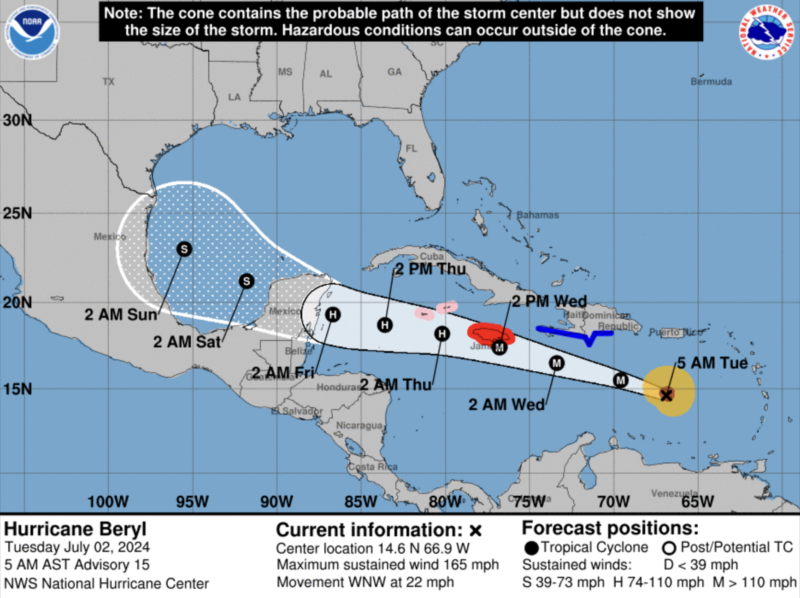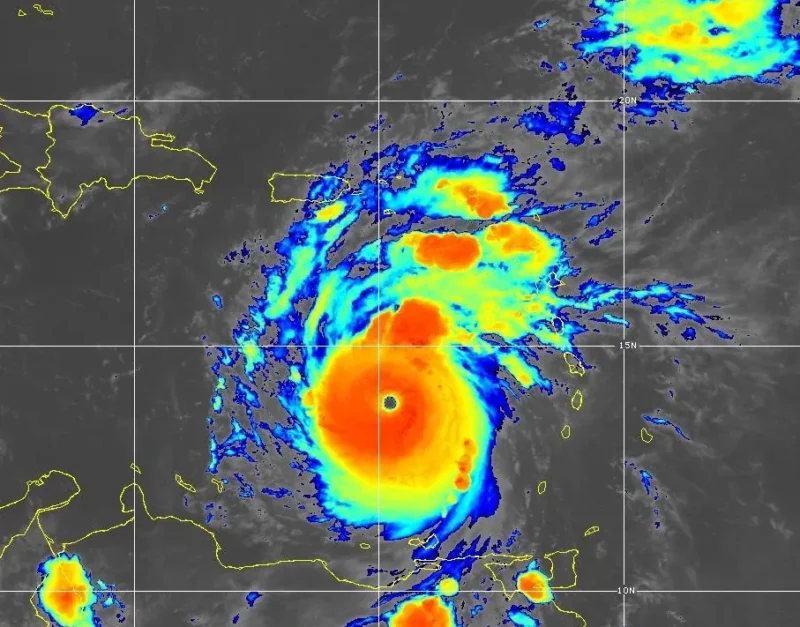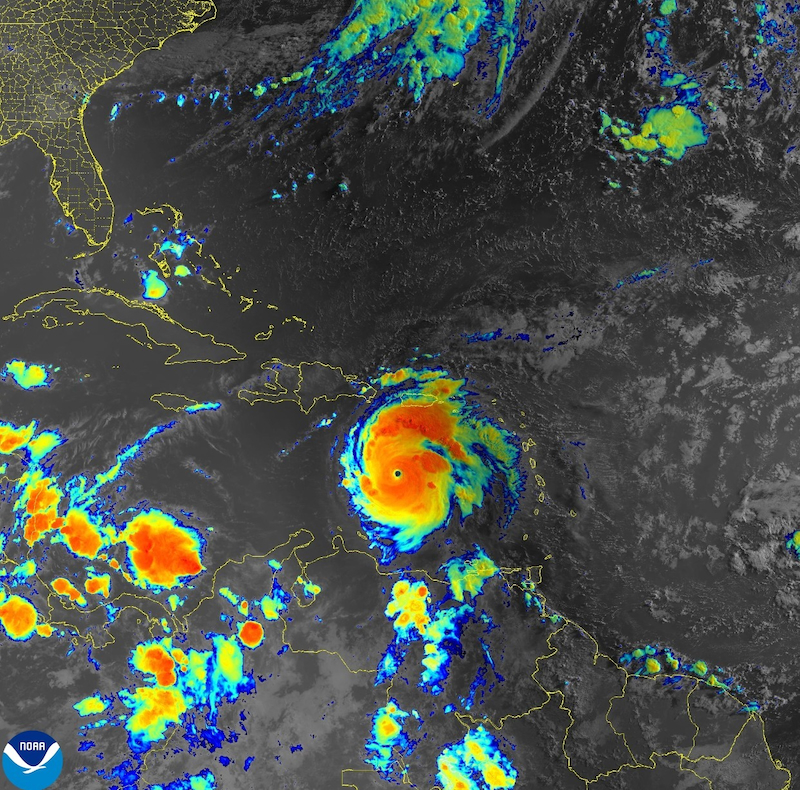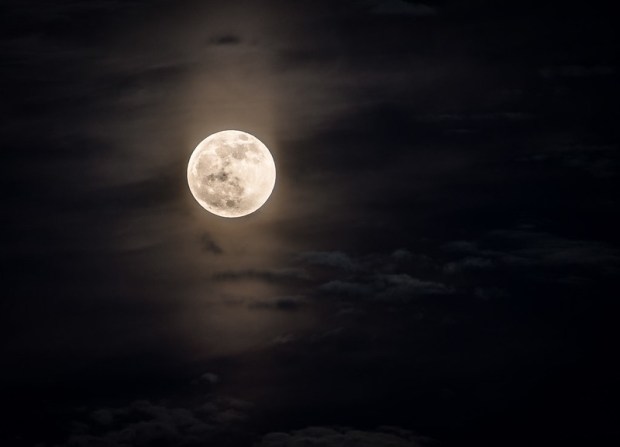- Beryl formed farther east than any other June hurricane since the mid-1800s, when record-keeping began.
- It moved from tropical depression status into a Category 3 hurricane in less than 48 hours, something that’s never happened before earlier than September (since record-keeping began).
- Overall, Hurricane Beryl became the strongest Atlantic hurricane on record for June, beating out Hurricane Audrey in 1957.
The Atlantic Basin usually doesn’t see its first major hurricane until around September 1. But, as its wind gusted to 160 mph overnight last night (July 1, 2024), Beryl became the earliest Category 5 hurricane on record. Experts say Beryl has been super-charged by warm seas.
And, as of Tuesday morning, July 2, Beryl was continuing its westward sweep through the Atlantic Basin. AP reported:
Hurricane Beryl strengthened to Category 5 status late Monday after it ripped doors, windows and roofs off homes across the southeastern Caribbean with devastating winds and storm surge fueled by the Atlantic’s record warmth.
Beryl made landfall on the island of Carriacou in Grenada as the earliest Category 4 storm in the Atlantic, then late in the day the National Hurricane Center in Miami said its winds had increased to Category 5 strength. Fluctuations in strength, and later a significant weakening, were forecast as the storm pushes further into the Caribbean in the coming days.
Beryl is headed toward the east coast of Mexico. If it continues on its current course, it should make another landfall on Sunday morning.


Bottom line: Hurricane Beryl had gusts of up to 160 mph last night, giving it Category 5 hurricane status and making it the earliest Category 5 storm on record.




